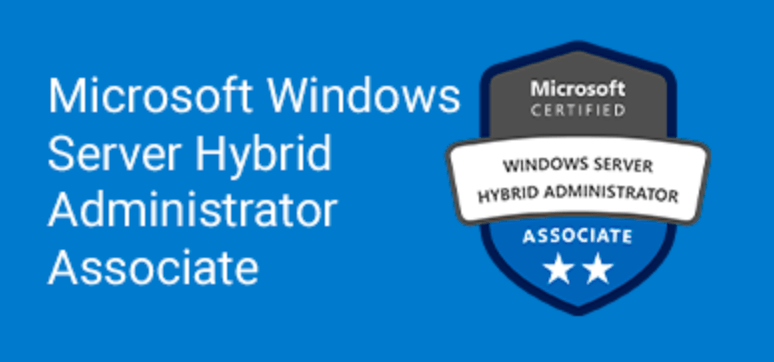
Lab: Monitoring and troubleshooting Windows Server
Scenario
Contoso, Ltd. is a global engineering and manufacturing company with its head office in Seattle, Washington, in the United States. An IT office and datacenter are in Seattle to support the Seattle location and other locations. Contoso recently deployed a Windows Server server and client infrastructure.
Because the organization deployed new servers, it’s important to establish a performance baseline with a typical load for these new servers. You’ve been asked to work on this project. Additionally, to make the process of monitoring and troubleshooting easier, you decided to perform centralized monitoring of event logs.
Note: An interactive lab simulation is available that allows you to click through this lab at your own pace. You may find slight differences between the interactive simulation and the hosted lab, but the core concepts and ideas being demonstrated are the same.
Objectives
After completing this lab, you’ll be able to:
- Establish a performance baseline.
- Identify the source of a performance problem.
- Review and configure centralized event logs.
Estimated time: 40 minutes
Lab setup
Virtual machines: AZ-801T00A-SEA-DC1 and AZ-801T00A-SEA-SVR2 must be running. Other VMs can be running, but they aren’t required for this lab.
Note: AZ-801T00A-SEA-DC1 and AZ-801T00A-SEA-SVR2 virtual machines are hosting the installation of SEA-DC1 and SEA-SVR2.
- Select SEA-SVR2.
- Sign in using the following credentials:
- Username: Administrator
- Password: Pa55w.rd
- Domain: CONTOSO
For this lab, you’ll use the available VM environment.
Exercise 1: Establishing a performance baseline
Scenario
In this exercise, you’ll use Performance Monitor on the server and create a baseline by using typical performance counters.
The main tasks for this exercise are to:
- Create and start a data collector set.
- Create a typical workload on the server.
- Analyze the collected data.
Note: After starting the Data Collector Set, there might be a delay of 10 minutes for the results to appear.
Task 1: Create and start a data collector set
- On SEA-SVR2, open Performance Monitor.
- Use Performance Monitor to create a new User Defined data collector set with the following settings:
- Name: SEA-SVR2 Performance
- Create: Create manually (Advanced)
- Type of data: Performance counter
- Performance counters (using the default instance options):
- Memory\Pages/sec
- Network Interface\Bytes Total/sec
- PhysicalDisk\% Disk Time
- PhysicalDisk\Avg. Disk Queue Length
- Processor\% Processor Time
- System\Processor Queue Length
- Sample interval: 1 second
- In Performance Monitor, start the SEA-SVR2 Performance data collector.
Task 2: Create a typical workload on the server
- On SEA-SVR2, start Windows PowerShell as administrator.
- To emulate a typical workload, at the Windows PowerShell command prompt, run the following commands:Code
fsutil file createnew bigfile 104857600 Copy-Item -Path .\bigfile -Destination \\SEA-DC1.contoso.com\c$\ -Force Copy-Item -Path \\SEA-DC1.contoso.com\c$\bigfile -Destination .\bigfile2 -Force Remove-Item -Path .\bigfile* -Force Remove-Item -Path \\SEA-DC1.contoso.com\c$\bigfile -Force - Leave the Windows PowerShell window open.
Task 3: Analyze the collected data
- On SEA-SVR2, switch to Performance Monitor.
- Stop the SEA-SVR2 Performance data collector set.
- In Performance Monitor, in the navigation pane, browse to Reports, User Defined, SEA-SVR2, SEA-SVR2_DateTime-000001, and then review the report data by using the Report view.
- Record the values that are listed in the report for later analysis. Recorded values include:
- Memory\Pages/sec
- Network Interface\Bytes Total/sec
- PhysicalDisk\% Disk Time
- PhysicalDisk\Avg. Disk Queue Length
- Processor\% Processor Time
- System\Processor Queue Length
Results
After this exercise, you should have established a baseline for performance-comparison purposes.
Exercise 2: Identifying the source of a performance problem
Scenario
In this exercise, you’ll simulate a load to represent the system in live usage, gather performance data by using your data collector set, and then determine the potential cause of the performance problem.
The main tasks for this exercise are to:
- Create additional workload on the server.
- Capture performance data by using a data collector set.
- Remove the workload and review the performance data.
Task 1: Create additional workload on the server
- On SEA-SVR2, open File Explorer.
- In File Explorer, browse to C:\Labfiles\Lab08 and launch CPUSTRES64.
- Configure the first highlighted task to run BUSY (75%).
Note: CPUSTRES64.EXE is a SysInternals utility that can be used to simulate CPU activity by running up to 64 threads in a loop.
Task 2: Capture performance data by using a data collector set
- On SEA-SVR2, switch to Performance Monitor.
- In Performance Monitor, browse to Data Collector Sets, User Defined, and then in the results pane, start the SEA-SVR2 Performance data collector set.
Note: Wait 1 minute to allow the data capture to occur.
Task 3: Remove the workload and review the performance data
- On SEA-SVR2, close CPUSTRES64.
- Switch to Performance Monitor.
- Stop the SEA-SVR2 Performance data collector set.
- In Performance Monitor, in the navigation pane, browse to Reports, User Defined, SEA-SVR2, SEA-SVR2_DateTime-000002, and then review the report.
- Record the values that are listed in the report:
- Memory\Pages/sec
- Network Interface\Bytes Total/sec
- PhysicalDisk\% Disk Time
- PhysicalDisk\Avg. Disk Queue Length
- Processor\% Processor Time
- System\Processor Queue Length
Results
After this exercise, you should have used performance tools to identify a potential performance bottleneck.
Exercise 3: Viewing and configuring centralized event logs
Scenario
In this exercise, you’ll use SEA-SVR2 to collect application event log entries from SEA-DC1.
The main tasks for this exercise are to:
- Configure subscription prerequisites.
- Create a subscription and verify the results.
Task 1: Configure subscription prerequisites
- On SEA-SVR2, switch to Windows PowerShell.
- To enable creating and managing subscriptions of events forwarded to SEA-SVR2, run the following command:Code
WECUtil qc /q - To ensure that the event source and collector have their local date and time synchronized, run the following command:Code
w32tm /resync /computer:SEA-DC1.contoso.com - To allow WinRM connectivity in case of Kerberos authentication issues, run the following command:Code
Set-Item WSMan:localhost\client\trustedhosts -Value *.contoso.com -Force - To establish a PowerShell Remoting session to SEA-DC1, run the following command:Code
Enter-PSSession -ComputerName SEA-DC1.contoso.com - To ensure that Windows Remote Management (WinRM) is enabled on SEA-DC1, run the following command:Code
winrm qcNote: Verify that the WinRM service is already running and that it’s set up for remote management.
- To ensure that the relevant Windows Defender Firewall with Advanced Security rules are enabled on SEA-DC1, run the following command:Code
Set-NetFirewallRule -DisplayGroup 'Remote Event Log Management' -Enabled True -Profile Domain -PassThruNote: Leave the Windows PowerShell window open.
- On SEA-SVR2, open Active Directory Users and Computers.
- In the Active Directory Users and Computers console, add the SEA-SVR2 computer account to the Event Log Readers group.
Task 2: Create a subscription and verify the results
- On SEA-SVR2, open Event Viewer.
- Create a new subscription with the following properties:
- Name: SEA-DC1 Events
- Computers: SEA-DC1
- Collector: initiated
- Events: Critical, Warning, Information, and Error
- Logged: Last 24 hours
- Logs: Application and System Windows Logs
- On SEA-SVR2, switch to the Event Viewer window, and then expand Windows Logs in the navigation pane.
- Select Forwarded Events and verify that the forwarded events include those generated on SEA-DC1.

